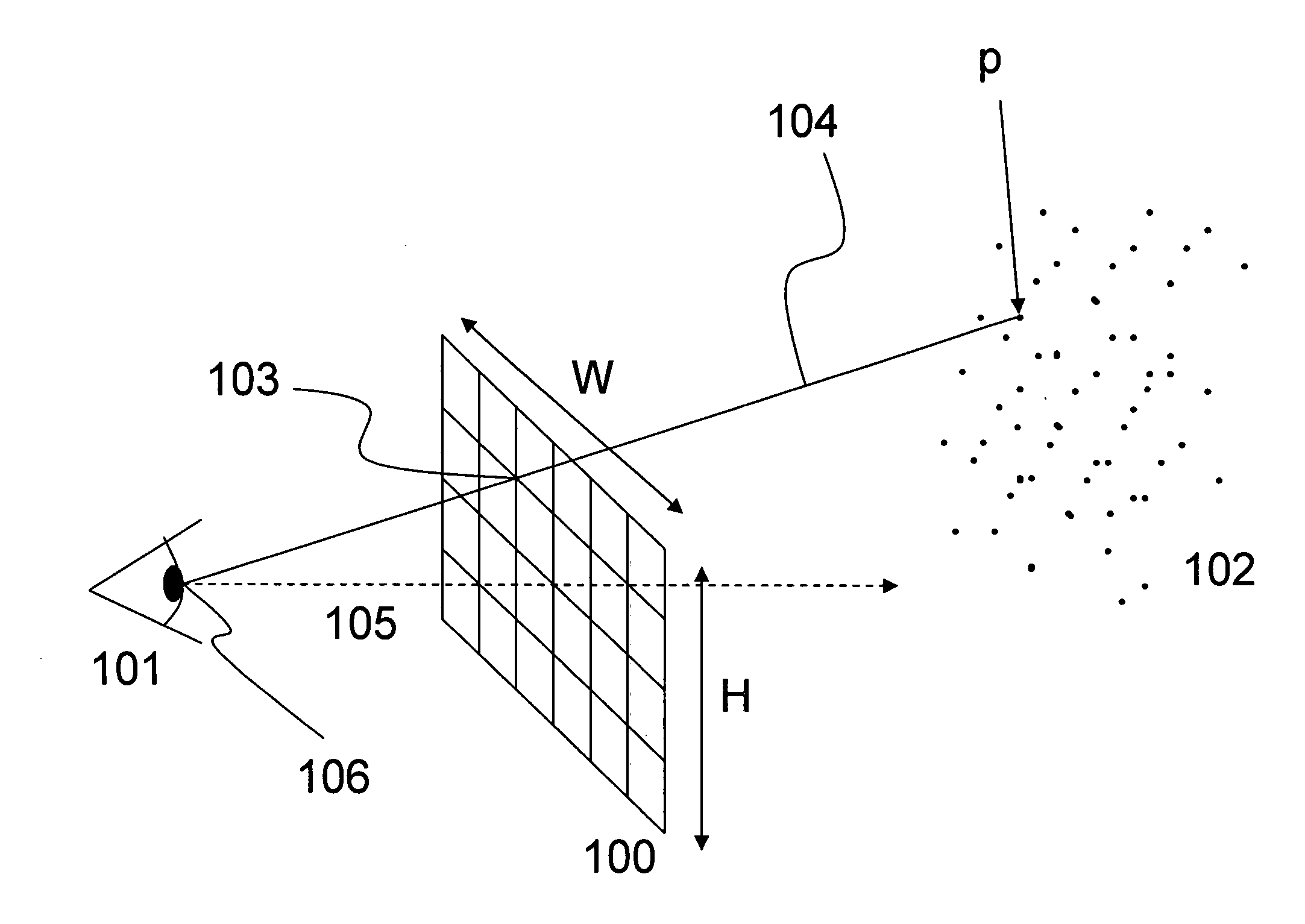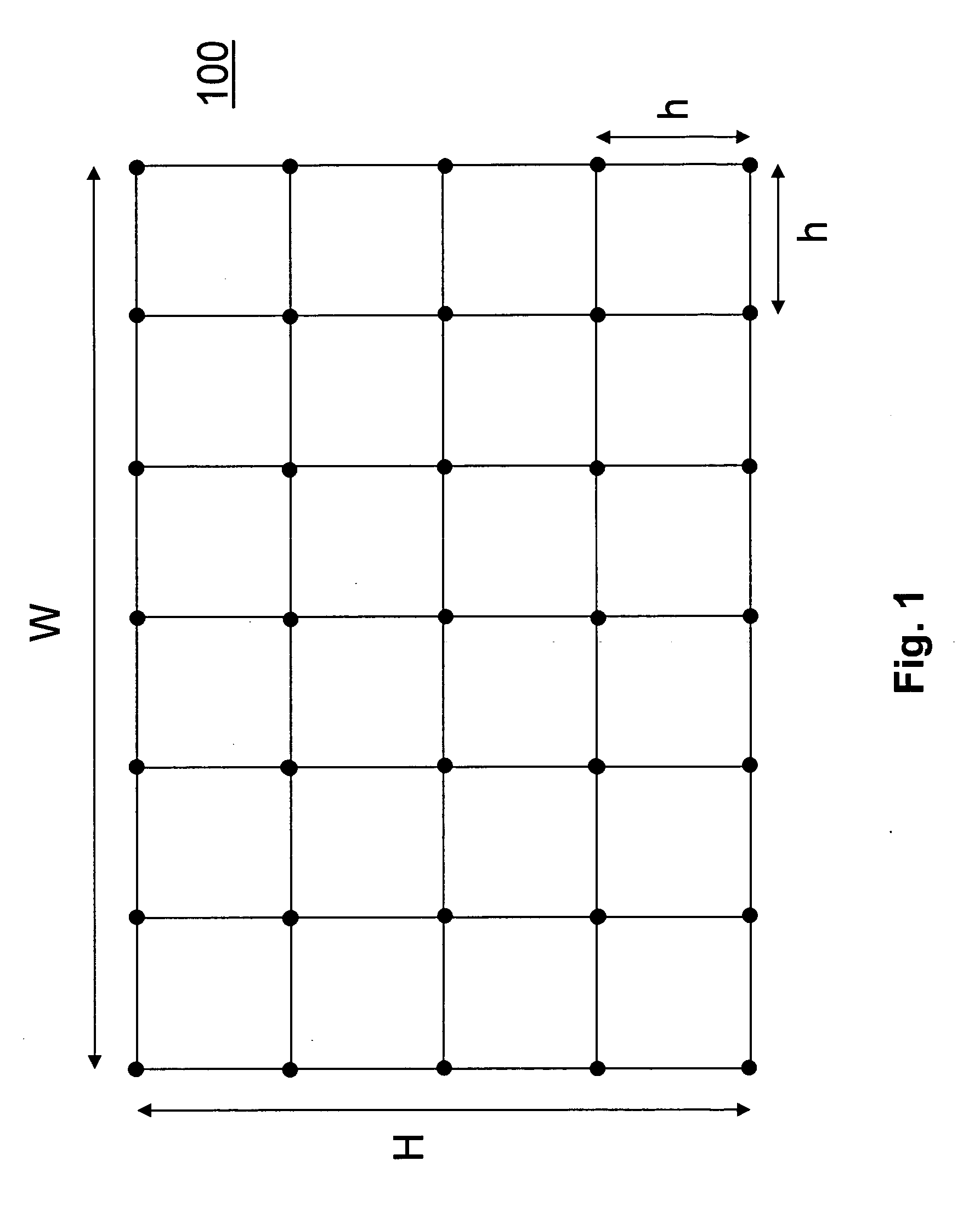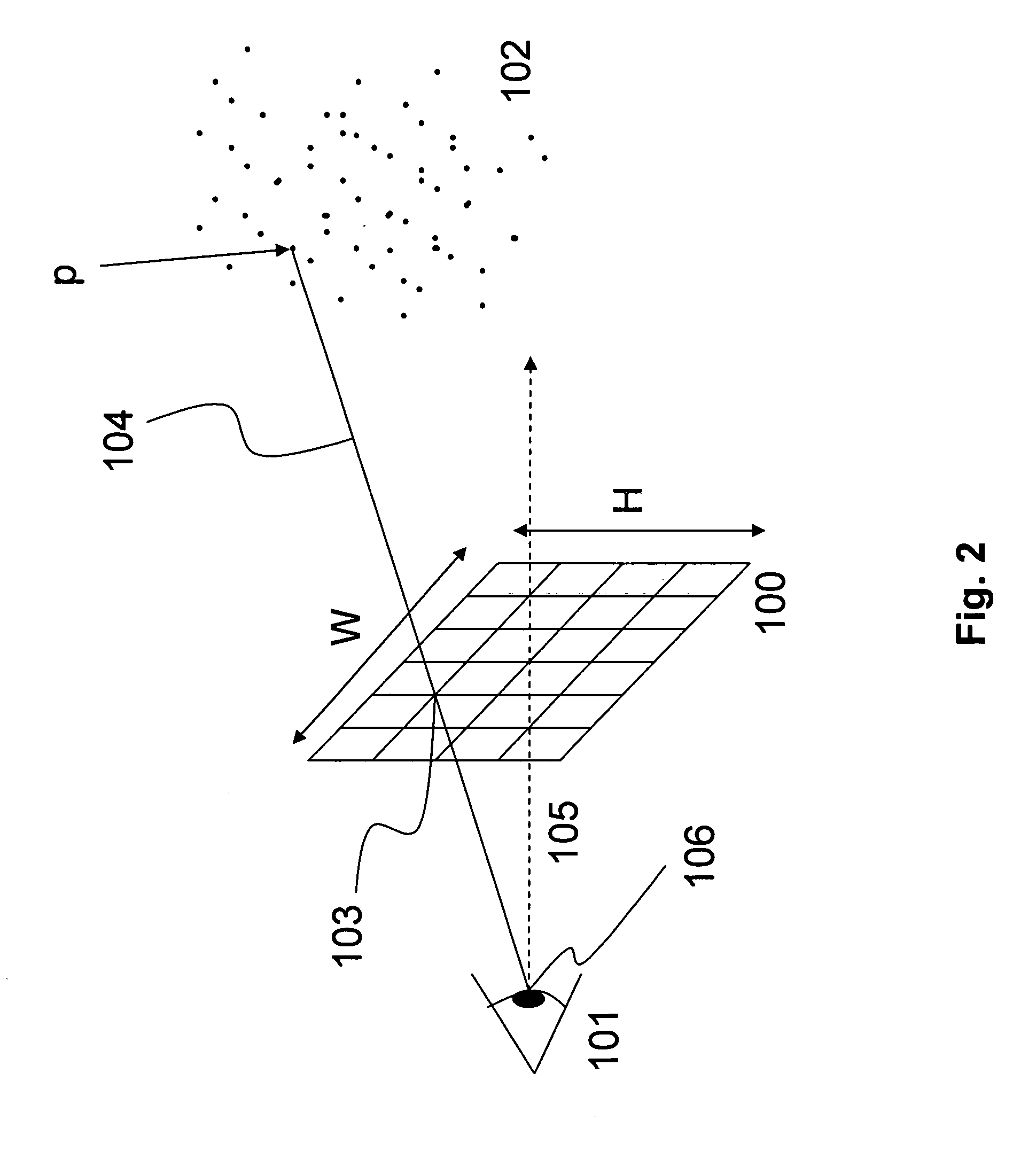Method of generating surface defined by boundary of three-dimensional point cloud
a point cloud and boundary technology, applied in the field of generating a three-dimensional (3d) surface, can solve the problems of increasing the frame rate generally places a practical limitation on and the complexity of the surface that can be rendered within a given frame rate increases accordingly. , to achieve the effect of more efficient approaches to rendering
- Summary
- Abstract
- Description
- Claims
- Application Information
AI Technical Summary
Benefits of technology
Problems solved by technology
Method used
Image
Examples
Embodiment Construction
[0031] Embodiments of the invention provide a method of generating a three-dimensional (3D) surface defined by the boundary of a 3D point cloud. According to the method, a depth map and a density map are formed from the 3D point cloud. The depth and density maps are then used to form a two-dimensional (2D) mesh representing the 3D surface by defining connectivity between points in the 3D point cloud. The 2D mesh is transformed into a 3D mesh defining 3D graphics primitives, which are then rendered in a virtual display system.
[0032] The term “3D point cloud” used herein denotes any plurality of three dimensionally related points, e.g., a finite set of 3D points. Each point in the 3D point cloud may be generally represented by a vector [x, y, z]T in Cartesian space or a vector [x, y, z, 1]T in homogeneous coordinates.
[0033] The term “virtual display system” used herein refers to any combination of hardware and / or software capable of rendering a 3D surface. For example, the virtual d...
PUM
 Login to View More
Login to View More Abstract
Description
Claims
Application Information
 Login to View More
Login to View More - R&D
- Intellectual Property
- Life Sciences
- Materials
- Tech Scout
- Unparalleled Data Quality
- Higher Quality Content
- 60% Fewer Hallucinations
Browse by: Latest US Patents, China's latest patents, Technical Efficacy Thesaurus, Application Domain, Technology Topic, Popular Technical Reports.
© 2025 PatSnap. All rights reserved.Legal|Privacy policy|Modern Slavery Act Transparency Statement|Sitemap|About US| Contact US: help@patsnap.com



